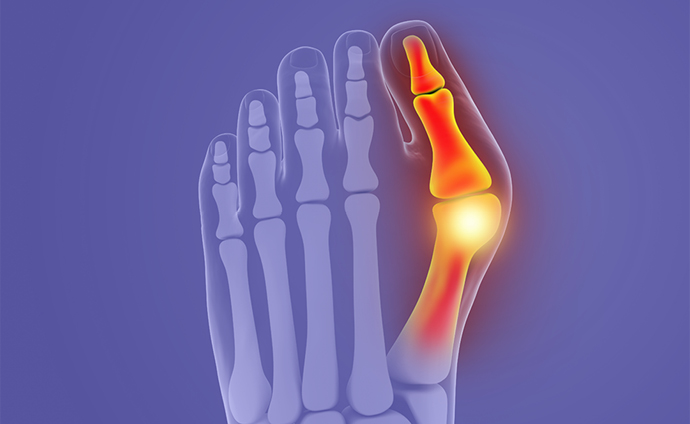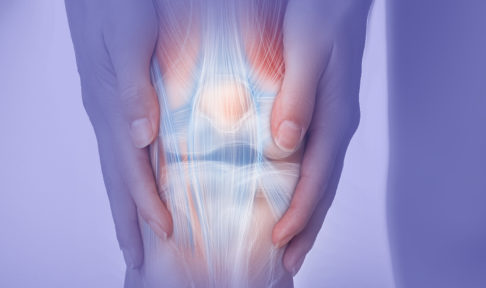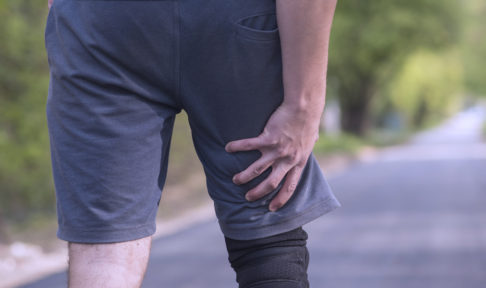Bunions are often thought of as a condition reserved for the elderly, so you may be surprised to learn they are incredibly common — in fact, over 14 million people in the UK are reported to suffer from bunions.
For many, bunions can grow without causing any major issues, but for others they cause pain or even impact walking ability. In acute cases, bunion corrective surgery may be required, and when this occurs, having a physio on hand to help speed up and improve your recovery is a smart idea.
But what are bunions?
Bunions are essentially a bony lump that forms between your big toe and foot joint. When a bunion forms, it causes the joint to misalign and can even cause your foot or toes to be pushed out of shape.
Bunions normally take many years to form and can cause the skin to look red and swollen, and in some cases can make wearing shoes or walking very painful.
What causes bunions?
Bunions can be caused by several factors, but will normally stem from genetics, specifically the way your foot is structured, which means they are somewhat hereditary. Bunions can also become present if you suffer from another condition that causes abnormalities in the structure of your feet, such as rheumatoid arthritis or cerebral palsy. If you’re already genetically predisposed to bunions, wearing extremely tight, narrow or pointed shoes can exacerbate the condition.
While bunions are most commonly reported in the UK by women over age 45, they could really happen to anyone if your foot is structured a certain way, or you suffer from any of the conditions mentioned above.

So what is bunion corrective surgery and who needs it?
If your bunions are at the stage that they are preventing you from walking normally or wearing shoes, you may be referred to an orthopaedic surgeon for bunion corrective surgery. There are a number of different techniques that can be used in this surgery (including inserting pins or screws or sometimes shaving off some of the bone lump that has formed) but the goal is always to reposition your big toe so that it is better aligned, reducing pain and allowing normal foot movement and gait.
A study published in the December 2001 issue of Foot and Ankle International reports a “90% to 100% percent success rate of bunion corrective surgery”, so it is well worth trying if your quality of life is being severely impacted.
How a physio can help in your post-surgery recovery
While there has previously been scepticism from surgeons that physiotherapy is required after bunion corrective surgery, there have been many studies done in the past decade that prove otherwise.
While some patients will just settle for resting and minimising weight-bearing after their surgery and recover well, it’s highly likely they won’t be functionally as strong as they could be if they had undertaken post-surgery physio.
After a thorough assessment of your condition, here are some of the ways we may treat you at Spectrum after bunion corrective surgery:
Joint mobilisations
One of the most important focuses post bunion corrective surgery is to get back mobility in the feet and toes. Joint mobilisations are a hands-on style of therapy, where your physio will manually reset your joint, without using devices or machines. This will help your foot return to a normal range of pain-free movement.
TENS therapy
If you are experiencing poor calf or glute activation in the side of your body where you had the surgery (which often happens when you have been overcorrecting or avoiding weight-bearing) it will impede your ability to recover. TENS therapy can be a great way to stimulate the nerves in those muscles via safe, electrical pulses to get them working normally again.
Dry needling
Similarly, if muscles in the side of your body where you had surgery are tight, dry needling is a great way to ‘shock’ the muscles into relaxing, which will then improve your overall mobility and reduce pain.
GameReady
If you’re experiencing any swelling or bruising post-surgery, there is no faster way to reduce it than using our GameReady Ice/Compression unit. A sleeve is wrapped around your foot, which is pumped full of icy water and tightens to compress the area, allowing for much more effective icing and compression at the same time than a standard ice pack can provide. When combined with manual, hands-on treatment, GameReady is even more effective.
Guided exercise therapy
As part of your post-operative recovery, guided exercise therapy will ensure your foot and toes get back to working normally, without pain. A programme will be personalised for you, based on a thorough assessment and may involve exercises you can do by yourself at home and others to be done in Spectrum’s gym in our London clinic. Most often it will be a combination of both!
Gait analysis
Down the line, once you have resumed a more normal level of pain-free movement in your foot, undergoing gait analysis can be a great way to ensure your foot is striking the ground as it should, and will inform any further, customised treatment you may need to correct any inconsistencies.
The unique thing about physio at Spectrum is that you can have all of these treatments (and more!) as part of a standard appointment, with no time limits or hidden costs. Book an appointment via our website and be guaranteed a time within 24 hours.



